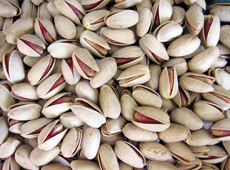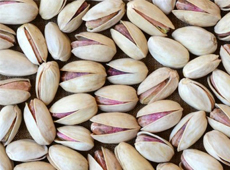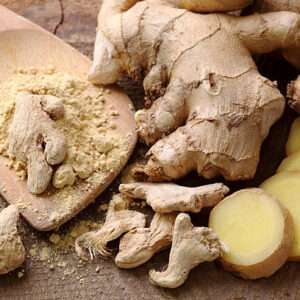Pistachios include many local name and each name represent a region shape or quality type. However in term of shapes there are in four main groups. All types can be founded in market in raw or roasted with several production offers such as mechanically, opened or closed pistachio, roasted and salted, roasted and salted with added lime.
Long Pistachios
The most famous local brands of long pistachio are as the following:
- Akbari: This type is the highest economic value. Its fruits are large and almond shaped. It can be harvested in late September. This is a newer variety with good yield and with long, large nuts.
- Momtaz: The fruit of this nut is almond shaped. It is very delicious compared to other types of pistachios. It can be harvested in late September.
- Badami: This nut is generally small. It mainly grows in gardens of Zarand, Kerman. It can be harvested in early summer.
- Ahmad Aghaei: This nut is rather large and its fruit is almond shaped. It can be harvested in late September. The newest commercial variety, very popular with the farmers, because of high yield and its shorter time to reach production. It is very popular in some markets like India and Greece. Production of this variety is increasing. It also has the whitest shell hue among the four.
Available sizes of Long Pistachio are 20/22, 22-24 and 24/26, with 18/20 also available in small quantities. Pistachio size unit is the number of nuts in one Once.

Akbari

Badami

Momtaz

Ahmad Aghei
Jumbo Pistachios
Kaleh Qouchi: This nut is famous for being large. It is sensitive to shortage of water and its leaves are complex. This type of nut is vulnerable to cold weather in spring. It can be harvested in mid September.
On the whole Kalleh Ghouchi is not being budded anymore and production is from existing trees. Although commercially quite successful, Kalleh Ghouchi trees showed a steep drop in growth and production as they grew older than 40 years old. It is expected that the production would slowly decline.
Available sizes are 20/22, 22/24 and 24/26, with 18/20 being available in small quantities.

Kaleh Qouchi
Round Pistachios
Fandoghi: This cultivar is the most widely available pistachio variety. Fandoghi is of round type and has the lowest shape index among the four cultivars. The reason is its limited yield, the new orchards are seldom planted with this variety.
It comes in the following sizes 28/30, 30/32 and 32/34 nuts per ounce. Size 26/28 is also available in small quantities.

Fandoghi
Kernel Pistachio and green skinned pistachios
This type of pistachio has totally green color which is used in food industrial. Commonly use to color and flavor the ice cream, chocolate or cake.

kernel

Green Skin Kernel
Common Packing For Container Shipment
| Products | Packing | Container |
|---|---|---|
| Pistachio In Shell |
10Kg Cartons | 1,100 Cartons in 20’FCL 2,200 Cartons in 40’FCL |
| 12Kg Cartons | 1,000 Cartons in 20’FCL 2,000 Cartons in 40’FCL |
|
| 50Kg Bags | 240 Bags in 20’FCL 480 bags in 40’FCL |
|
| Pistachio kernel |
10Kg Cartons | 1,100 Cartons in 20’FCL 2,200 Cartons in 40’FCL |
Origin of Pistachio with Production
Other usage of Pistachios
Pistachio shells: The empty pistachio shells are useful for recycling in several ways. Practical uses include as a fire starter, just as kindling would be used with crumpled paper; to line the bottom of pots containing houseplants, for drainage and retention of soil for up to two years; as a mulch for shrubs and plants that require acid soils; as a medium for orchids; and as an addition to a compost pile designed for wood items that take longer to decompose than leafy materials, taking up to a year for pistachio shells to decompose unless soil is added to the mix. Shells from salted pistachios can also be placed around the base of plants to deter slugs and snails. Many craft uses for the shells include holiday tree ornaments, jewelry, mosaics, and rattles. Research indicates that pistachio shells may be helpful in cleaning up pollution created by mercury emissions.
Usages of the green skin: In traditional dying fabric. One of the most useful material is the green skin of pistachio. It also used by many ranchers as a rich supplement food for animals.
Nutrition Facts
- Serving Size: 100gm
- Amounts per servings
-
Calories 562Calories from Fat 415
- % Daily Values*
-
Total Fat 45g69%
-
Saturated fat 6g30%
-
Polyunsaturated fat 14g
-
Monounsaturated fat 24g
-
Trans fat 0g
-
Cholesterol 0mg0%
-
Sodium 1mg0%
-
Potassium 1,025mg29%
-
Total Carbohydrate 28g9%
-
Dietary fiber 10g40%
-
Sugar 8g
-
Protein 20g40%
-
Vitamin A8%Vitamin C9%
-
Calcium10%Iron21%
-
Vitamin D0%Vitamin B685%
-
Vitamin B120%Magnesium30%
- *Percent Daily Values are based on a 2,000 Calorie diet.
Facts on Pistachio Nuts
The pistachio , a member of the cashew family, is a small tree originating from Central Asia and the Middle East.[2] The tree produces seeds that are widely consumed as food.
Pistacia vera often is confused with other species in the genus Pistacia that are also known as pistachio. These other species can be distinguished by their geographic distributions (in the wild) and their seeds which are much smaller and have a soft shell.





